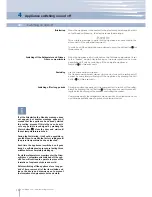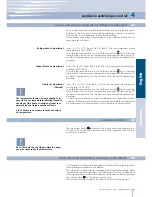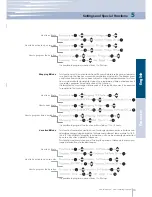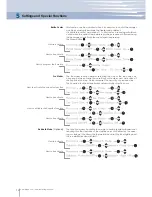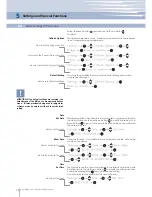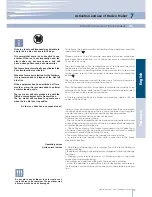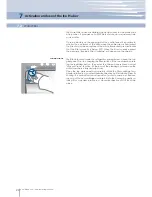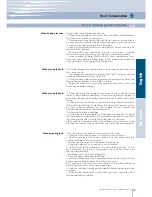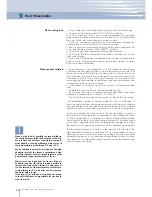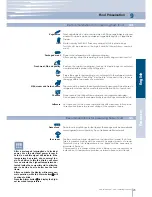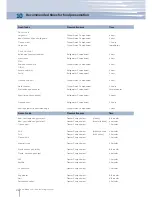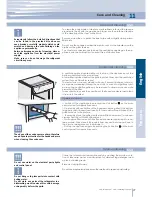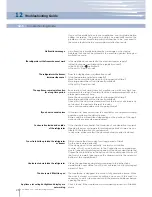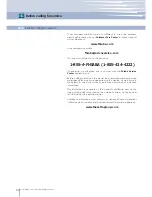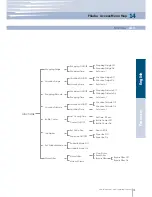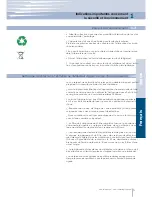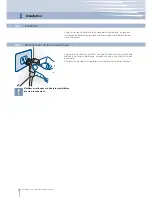
24
9
www.fhiaba.com
∙
www.thevettagroup.com
Food Preservation
When cooking food
When you have leftovers
Do not taste raw or partially cooked meat, poultry,
fi
sh and eggs.
Cook meat at a temperature of 75°C (167°F) or higher.
For cuts of meat over 5 cm, use a meat thermometer to check the
temperature. For thinner cuts of meat, to check if it is cooked, check
the color of the juice and whether it is clear or pink.
If you are cooking meat which is not yet defrosted, increase the
cooking time one and half times the normal duration.
Bear in mind that roasted meat and poultry, when cooked in the
oven, need temperatures of 160°C (320°F) or higher.
Cook the egg whites and yolks until they are well done.
Do not use the same containers that have contained raw or par-
tially cooked eggs.
If your oven or microwave is equipped with a probe for temperature
control, use it - internal temperatures are the best gauge for deter-
mining cooking completion.
Keep leftovers in the refrigerator or in the freezer in small closed
containers. Before placing them in the refrigerator, make sure that
they have cooled off. Therefore let at least two hours pass after cook-
ing and make sure that there is adequate air circulation around the
container, so that the food can cool off quickly - this practice avoids
increasing the temperature in the fridge / freezer compartment and
subsequent cooling cycles as a result.
Date leftover containers and use them within the recommended
time.
Completely cover and heat leftovers before serving.
Boil sauces and soups. Consume leftovers after they have been
heated to a temperature of at least 75°C (167°F).
If you think the food is gone bad, or when in doubt, throw it away.
When a high level of humidity is present either in
the environment or in the foods placed in the Fre-
sco drawers, the bottom of the Fresco compart-
ment might be covered with some water or ice (if
the temperature is set between 0°C and -2C°).
Such condition is normal and it is due to the high
humidity levels of the Fresco compartment; high
humidity together with low temperatures is what
guarantees a longer preservation of foods.
Water or ice can disappear on its own if the air
humidity level should lower; it is also possible to
remove the water with a towel. If a thin layer of
ice has formed, set the temperature of the Fresco
compartment to +2°C and after one day remove
the water with a towel.
If the layer of ice is thicker, it might be necessary
to shut off the Fresco compartment for one day in
order to melt it.
A characteristic unique to Fhiaba products is the combination of
micro beaded stainless steel crisper drawers and the main stainless
steel interior liner that help generate and maintain optimum internal
humidity levels for extended preservation of fruit and vegetables.
A natural condition that may occur, is the accumulation of water on
the bottom of the refrigeration compartment below the bottom crisp-
er. This is dependant on a number of factors, ambient temperature
and humidity levels in the surrounding environment, moisture levels
on fruit and vegetables placed in the refrigerator, frequency in which
the main door is opened and exposed to the ambient environment.
This temporary presence of water on the bottom is the result of the
high humidity environment maintained in the compartment and is
absolutely normal, and under normal operating conditions should be
eliminated. However, in rare occasions where there may be an exces-
sive amount of condensation simply remove the bottom drawer and
wipe access water away.
Summary of Contents for 0T
Page 1: ...USER MANUAL MODE D EMPLOI EN FR...
Page 2: ......
Page 35: ...English Fran ais...
Page 36: ......
Page 69: ...English Fran ais...
Page 70: ......
Page 72: ...www fhiaba com Info Line 800 Fhiaba 800 344222 B09000109 UL...

